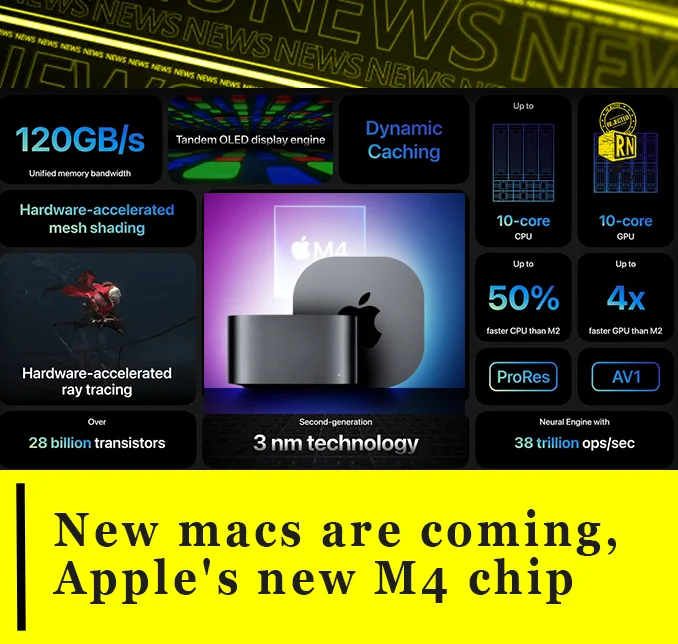History of apple
Apple Inc. is a large company based in Silicon Valley, California, Cupertino. The company specializes in creating consumer electronics, software, and services. Apple Computer Company was established by Steve Jobs, Steve Wozniak, and Ronald Wayne in 1976. Two years later, Jobs and Wozniak launched the company as Apple Computer, Inc. In the year 2007, the company was named Apple Inc. because its concentration of activities had shifted from making computers to consumer electronics. The largest technology business worldwide by revenue, Apple generated $383.29 billion in 2023
Macs are getting a huge makeover, but not in the way you'd think. With Apple Intelligence now available on the iPhone and iPad, Macs are next in line to gain Apple's generative AI features. This update will contain the new M4 CPU, which promises a big performance improvement and greater memory—both of which should result in a significant upgrade for Mac laptops. The way Apple SVP Greg Joswiak teased the arrival of new laptops, which are scheduled to be announced in the final week of October (beginning Monday), hints that the new Macs would contain significant hardware and software enhancements over previous models.
Macs are getting a huge makeover, but not in the way you'd think. With Apple Intelligence now available on the iPhone and iPad, Macs are next in line to gain Apple's generative AI features. This update will contain the new M4 CPU, which promises a big performance improvement and greater memory—both of which should result in a significant upgrade for Mac laptops. The way Apple SVP Greg Joswiak teased the arrival of new laptops, which are scheduled to be announced in the final week of October (beginning Monday), hints that the new Macs would contain significant hardware and software enhancements over previous models.
New Macs and its features, M4 chips
Since Steve Jobs introduced the Mac mini in 2005, it has been regarded as a DIY computer due to its compact footprint, which allows users to bring their display, keyboard, and mouse. The concept of developing a little computer that runs a complete version of macOS has proven successful. However, over time, the Mac mini has been marginalized and ignored. While the M1 chip brought new vitality to the device, it was insufficient to rekindle customer interest.
The Mac mini is finally evolving, and it's supposed to be a major deal. There is widespread speculation that the new Mac mini will closely resemble an Apple TV (yes, that little), signifying a break from the existing design. Despite its diminutive size, this smaller Mac is expected to be as powerful as a high-performance Mac, with Apple releasing it in two variations, including an M4 Pro edition. This variant is rumored to have five USB-C ports, two of which will be on the front of the tablet.
Apple has already proved that it has the hardware to run advanced AI models and applications on Macs equipped with M3 Pro and Max processors. With the launch of Apple Intelligence, the company will demonstrate how its hardware and software work together to provide an enhanced AI experience on the Mac. And what better way to demonstrate Apple's engineering skills than with the MacBook Pro, the company's flagship notebook geared at professional customers, designers, and creators? The new 14- and 16-inch models are expected to get a processor upgrade with the M4 generation. However, the emphasis will be on how Apple improves the entry-level 14-inch Pro.
(MacBook Pro: 14 and 16-inch variants with M4/M4 Pro/M4 Max chips, 16+GB RAM, 10-core CPU and GPU, and three Thunderbolt 4 connections.
Mac mini: Smaller footprint than the current model, M4 or M4 Pro processor, no USB-A connectors, five USB-C ports, an HDMI port, and an integrated power source.
iMac: No major design modifications; all-in-one design with M4 CPUs.)








